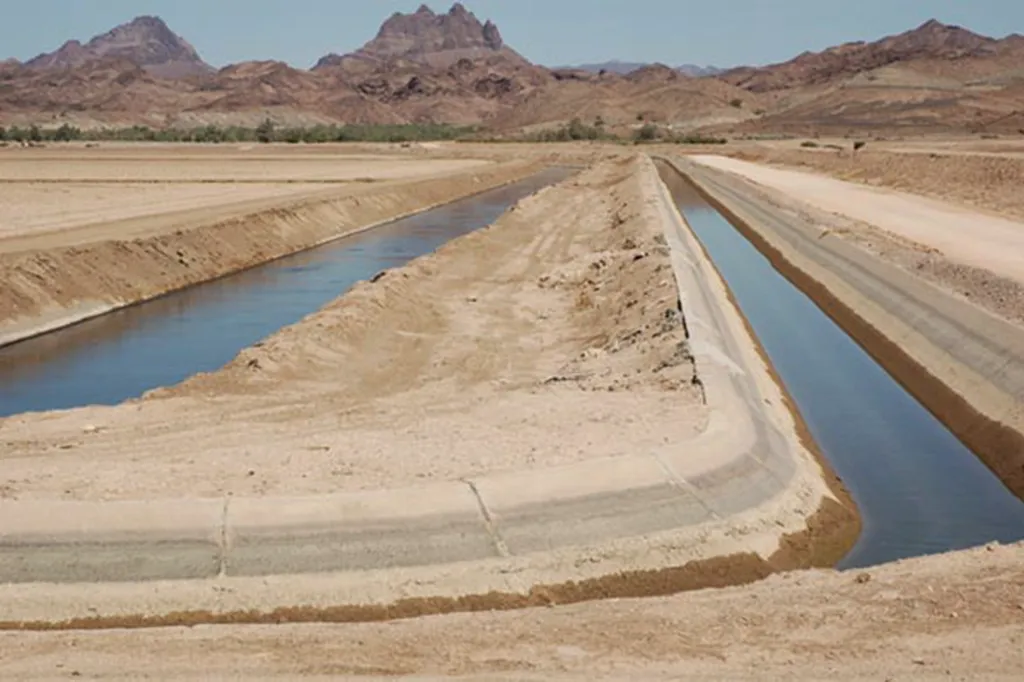In the arid landscapes of oasis agriculture, where water scarcity is a constant challenge, farmers and researchers are turning to saline water irrigation as a critical strategy. But how does this practice impact the very foundation of soil health? A recent study published in the journal *Agricultural Water Management* (translated from Chinese as “农业水利”) sheds light on this pressing question, offering insights that could reshape irrigation practices and soil management in the energy and agricultural sectors.
Led by Rui Chen from the College of Water & Architectural Engineering at Shihezi University in Xinjiang, China, the study delves into the intricate world of soil aggregates, carbon sequestration, and microbial communities. Over four years, Chen and his team conducted a cotton field experiment, irrigating crops with water at varying salinity levels: CK (0.87 g·L⁻¹), T1 (3 g·L⁻¹), T2 (5 g·L⁻¹), and T3 (8 g·L⁻¹).
The findings are nuanced and revealing. Increasing salinity elevated levels of salt cations (K⁺, Ca²⁺, Na⁺, Mg²⁺), total nitrogen, soil organic carbon (SOC), and labile organic carbon (LOC) within soil aggregates. However, total carbon (TC), inorganic carbon (SIC), and microbial biomass carbon (MBC) decreased. This suggests a complex interplay between salinity and soil carbon dynamics.
“Saline irrigation is a double-edged sword,” Chen explains. “While it can enhance certain aspects of soil carbon, it also reduces microbial biomass carbon, which is crucial for soil health and fertility.”
The study also uncovered significant variations in microbial diversity across different soil aggregate fractions. While saline irrigation reduced soil fungal diversity, it did not significantly alter bacterial diversity. Interestingly, the smallest aggregate fraction (< 0.25 mm) harbored the highest fungal richness and bacterial diversity, highlighting the importance of aggregate size in microbial ecology. Network analysis added another layer of complexity. Increasing salinity simplified bacterial community interactions but increased the proportion of coexisting species. Fungal community networks, however, showed no significant trends. This suggests that bacteria and fungi respond differently to salinity, a factor that could influence soil management strategies. Redundancy analysis identified SOC, LOC, TC, and Na⁺ as the primary factors governing both bacterial and fungal communities. Base cations and carbon fractions exerted a stronger influence on fungi, indicating that nutrient management could play a pivotal role in maintaining microbial diversity. So, what does this mean for the future of saline water irrigation? Chen recommends a salinity threshold of ≤ 3 g·L⁻¹ to maintain sustainable crop yield and soil structural stability. This threshold could serve as a guideline for farmers and policymakers, balancing the need for water conservation with the imperative of soil health. The study provides a critical scientific foundation for optimizing saline water irrigation management in oasis ecosystems. As water scarcity continues to challenge agricultural systems worldwide, these findings offer a roadmap for sustainable practices that can mitigate environmental impacts while ensuring food security. In the broader context of the energy sector, understanding the impacts of saline water irrigation on soil health can inform the development of integrated water management strategies. By optimizing irrigation practices, we can enhance agricultural productivity, reduce water waste, and promote sustainable land use. As we grapple with the challenges of climate change and resource scarcity, studies like this one are invaluable. They remind us that the solutions to our most pressing problems often lie in the intricate web of life beneath our feet, in the soil that sustains us. By unraveling these complexities, we can pave the way for a more sustainable and resilient future.

